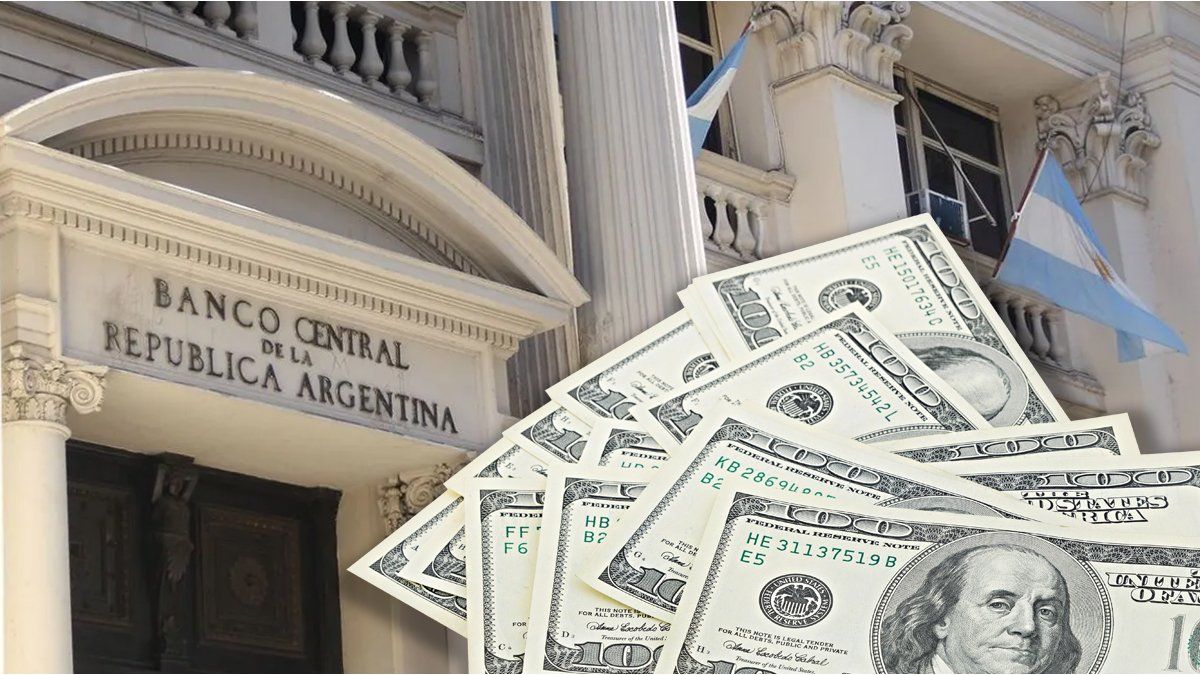He red of the reserves of the Central Bank is one of the main focuses of market concernwhich casts a shadow of doubt over the roadmap of Luis Caputo and keeps the country risk above 1,550 basis points. And the Government’s policy to maintain the exchange rate anchor has contributed to slowing the accumulation of foreign currency. According to a report by one of the most widely read consulting firms in the City, through different mechanisms The current economic team has already allocated US$12.4 billion to intervene in the exchange rate gapa number that far exceeds the administrations of Sergio Massa and Martín Guzmán.
The economic team has organized its roadmap based on the priority of extending the deceleration of inflation through, among other factors, the exchange rate anchor. It seeks to convince a hesitant market that it will be able to make the CPI converge with the rate of devaluation close to 0%, close the exchange rate gap and, when that happens, open the exchange rate trap without a devaluation jump. To such an extent that last month it announced direct intervention on financial dollars with dollars from reserves that remain negative.
The consultant Eco Gowhich directs Marina from Poggettocalculated how many reserves the administration of Luis Caputo and Santiago Bausili gave up in order to try to keep the exchange rate gap at bay. According to its latest monthly report, Since the beginning of the mandate and until July 30, it accumulated an intervention on financial dollars of US$12.4 billion. The figure far exceeds the US$2.766 billion used by Guzmán and the US$7.619 billion used by Massa.
It happened through three channels. The main one, present from the very beginning of the Caputo plan, was the dollar blendThis exchange rate scheme forces exporters to liquidate 20% of their foreign currency in the cash settlement market (CCL) and only 80% in the official market in order to obtain a higher exchange rate than the wholesale rate. This means that 2 out of every 10 dollars exported enter through the bond market and do not reach the BCRA reserves.
image.png
This is an intervention on the exchange rate gap because the dollar blend implies adding a considerable supply of foreign currency to the CCL that affects its price. Something similar happens with the dollars of the inbound tourismwhich since the previous Government can be exchanged for pesos in the financial market at an exchange rate higher than the official one and, therefore, add supply to the financial dollar.
Last month, direct intervention by the BCRA was addeda measure that was actually presented as an announcement of monetary policy aimed at sterilizing the pesos issued to buy reserves since April 30th within the framework of the launch of “phase 2” of the program that consists of closing the four emission taps (fiscal deficit, remunerated liabilities, puts and purchase of reserves). But the reality is that the entire market agrees that the real objective is to reduce the gap at the cost of giving up previously acquired reserves.
Eco Go estimated that the $2.4 trillion that the BCRA clarified it aims to sterilize through this mechanism is equivalent to a volume of foreign currency of around US$1.9 billion to bridge the gap. By the end of July, The consulting firm had used US$250 million in these operations.
Intervention and parallel dollar
The result of this intervention was to reduce the exchange rate gap from 60% in mid-July to 40% at the end of last month. On Monday, the gap between the CCL and the official exchange rate stood at 36.4%.
The truth is that, Even despite the intervention, there was resistance to the downsideThe CCL initially retreated from the peak of $1,428 on July 12 to the $1,300 zone at the end of that month. It has been hovering around that level ever since. On Monday it fell 1.3% to $1,281.
The truth is that The strategy of doubling the use of reserves to contain the gap coincides with the most unfavorable moment for the flow of foreign currency for seasonal reasons. Added to this is the fact that in June the BCRA’s currency purchase cycle was cut off (early) and it has already accumulated two months of sales balance as a result of the progressive normalization of the pace of import payments.
Last month’s debt maturities (bondholders, IMF and other multilaterals) added up to In July, net reserves fell by US$4.6 billionaccording to the economic studies department of Banco Provincia. According to the methodology used for its calculation, international holdings fluctuate in negative territory between US$4,000 million and US$6,500 million.
In this regard, a report by Personal Investment Portfolio (PPI) He warned: “Although the BCRA was able to improve its performance in the official market in the last week, the outlook ahead is bleak. In the very short term, private demand will probably accelerate due to the remaining ON and provincial payments in August. In September, the new import regime will overlap with the old one, which will lead to more than 100% of the import flow requiring access to the official market.”
He added: “This pressure will be even greater in October and November due to the way the scheme was designed. If there are no changes on the exchange front, the BCRA will once again be a net seller in the official market. Given the growing authorized private demand and the expectation that supply will not accelerate from these levels, its sales would be greater than those exhibited in June (-US$85 million in total for the month) and July (-US$180 million).”
Given this scenario, the government’s bet is on money laundering. And in the longer term, a victory for Donald Trump in the United States that would unlock the new debt with the International Monetary Fund that Caputo is seeking, a horizon that is by no means assured.
Source: Ambito
I am a 24-year-old writer and journalist who has been working in the news industry for the past two years. I write primarily about market news, so if you’re looking for insights into what’s going on in the stock market or economic indicators, you’ve come to the right place. I also dabble in writing articles on lifestyle trends and pop culture news.




